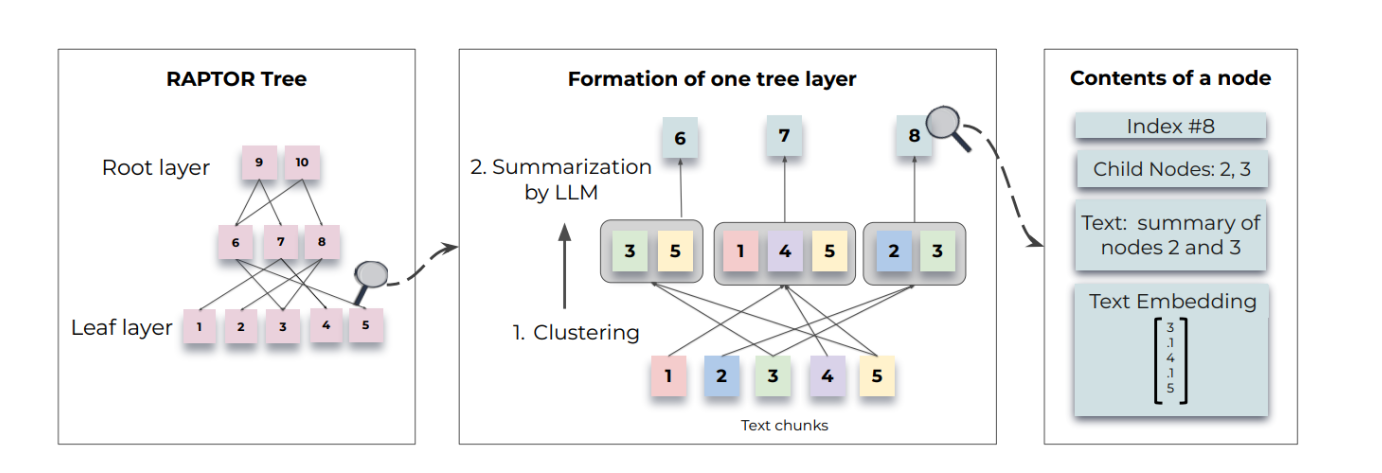基于Paddle实现Transformer图像降噪
1.简介由于CNN在从大规模数据中学习广义图像先验知识方面表现良好,这些模型已被广泛应用于图像恢复等相关任务。最近,另一类神经结构Transformers在自然语言和High-Level视觉任务上显示出显著的性能提升。虽然Transformer模型缓解了CNN的不足(即有限的感受野和对输入内容的适应性),但其计算复杂度随空间分辨率呈二次增长,因此无法应用于大多数涉及高分辨率图像的图像恢复任务。在这
1.简介
由于CNN在从大规模数据中学习广义图像先验知识方面表现良好,这些模型已被广泛应用于图像恢复等相关任务。最近,另一类神经结构Transformers在自然语言和High-Level视觉任务上显示出显著的性能提升。虽然Transformer模型缓解了CNN的不足(即有限的感受野和对输入内容的适应性),但其计算复杂度随空间分辨率呈二次增长,因此无法应用于大多数涉及高分辨率图像的图像恢复任务。在这项工作中,我们提出了一种高效的转换器模型,通过在构建模块(多头注意和前馈网络)中进行几个关键设计,它可以捕获长距离的像素交互,同时仍然适用于大型图像。我们的模型名为RestorationTransformer(Restormer),在多个图像恢复任务上实现了SOTA的结果,本Repo主要复现了图像去噪的模型。
原repo: https://github.com/swz30/Restormer
论文地址: https://arxiv.org/pdf/2111.09881.pdf?ref=https://githubhelp.com
2.复现精度
原repo采用的是8卡训练,这里我改为4卡,同时iters 乘以2,学习率除以2。 在CBSD68测试集的测试效果如下表,达到验收指标,PSNR: 34.39。
Network opt iters learning rate batch_size dataset GPUS PSNR
Restormer AdamW 600000 1.5e-4 8 CBSD68 4 34.39
3.数据集
下载地址:
https://aistudio.baidu.com/aistudio/datasetdetail/140244
解压数据集
In [ ]
%cd data/
!cat data140244/DFWB.tar.gza* | tar zxv
最优权重:
链接: https://pan.baidu.com/s/14lxC6gHrr6BXHJBZgY1C_g
提取码: t067
4.环境依赖
PaddlePaddle == 2.2.0
scikit-image == 0.19.2
5.代码解读
数据集部分
数据集为DIV2K, Flickr2K, WED, BSD这4个数据集的融合,简称为DFWB。只需要读取真值图片,样本图片基于真值图片叠加随机噪声生成。
if self.sigma_type == ‘constant’:
sigma_value = self.sigma_range
elif self.sigma_type == ‘random’:
sigma_value = random.uniform(self.sigma_range[0], self.sigma_range[1])
elif self.sigma_type == ‘choice’:
sigma_value = random.choice(self.sigma_range)
noise_level = sigma_value / 255.0
noise = paddle.randn(img_lq.shape,dtype=‘float32’).numpy() * noise_level
img_lq = img_lq + noise.astype(‘float32’)
上述代码根据sigma_type来判断使用哪种方式来获取sigma_value。本项目训练时使用的random,同时sigma_range的范围是0到50。测试的时候使用固定的sigma_test值生成测试样本。
直接使用paddle的randn生成随机噪声,然后与噪声等级相乘,最后叠加到原图上,供模型训练与测试。
模型部分
模型采用Transform的形式构成,下面简单介绍一下。
模型架构如上图所示,其中Transformer模块代码如下:
class TransformerBlock(nn.Layer):
def init(self, dim, num_heads, ffn_expansion_factor, bias, LayerNorm_type):
super(TransformerBlock, self).init()
self.norm1 = LayerNorm(dim, LayerNorm_type)
self.attn = Attention(dim, num_heads, bias)
self.norm2 = LayerNorm(dim, LayerNorm_type)
self.ffn = FeedForward(dim, ffn_expansion_factor, bias)
def forward(self, x):
x = x + self.attn(self.norm1(x))
x = x + self.ffn(self.norm2(x))
return x
每个TransformBlock模块还包含了一个Attention和FeedForward模块。代码分别如下:
class Attention(nn.Layer):
def init(self, dim, num_heads, bias):
super(Attention, self).init()
self.num_heads = num_heads
# self.temperature = nn.Parameter(torch.ones(num_heads, 1, 1))
self.temperature = paddle.create_parameter(shape=[num_heads, 1, 1],dtype=‘float32’,
default_initializer=nn.initializer.Constant(1.0))
self.qkv = nn.Conv2D(dim, dim*3, kernel_size=1, bias_attr=bias)
self.qkv_dwconv = nn.Conv2D(dim*3, dim*3, kernel_size=3, stride=1, padding=1, groups=dim*3, bias_attr=bias)
self.project_out = nn.Conv2D(dim, dim, kernel_size=1, bias_attr=bias)
def forward(self, x):
b,c,h,w = x.shape
qkv = self.qkv_dwconv(self.qkv(x))
q,k,v = qkv.chunk(3, axis=1)
b1, hc, h1, w1 = q.shape
# q = paddle.reshape(q, [b1, self.num_heads, -1, h1, w1])
c = hc // self.num_heads
q = paddle.reshape(q, [b1, self.num_heads, c, (h1*w1)])
# q = rearrange(q, 'b (head c) h w -> b head c (h w)', head=self.num_heads)
b1, hc, h1, w1 = k.shape
# k = paddle.reshape(k, [b1, self.num_heads, -1, h1, w1])
c = hc // self.num_heads
k = paddle.reshape(k, [b1, self.num_heads, c, (h1*w1)])
# k = rearrange(k, 'b (head c) h w -> b head c (h w)', head=self.num_heads)
b1, hc, h1, w1 = v.shape
# v = paddle.reshape(v, [b1, self.num_heads, -1, h1, w1])
c = hc // self.num_heads
v = paddle.reshape(v, [b1, self.num_heads, c, (h1*w1)])
# v = rearrange(v, 'b (head c) h w -> b head c (h w)', head=self.num_heads)
q = paddle.nn.functional.normalize(q, axis=-1)
k = paddle.nn.functional.normalize(k, axis=-1)
attn = (q @ k.transpose([0, 1, 3, 2])) * self.temperature
attn = F.softmax(attn, axis=-1)
out = (attn @ v)
b, head, c, hw = out.shape
# out = rearrange(out, 'b head c (h w) -> b (head c) h w', head=self.num_heads, h=h, w=w)
# out = paddle.reshape(out, [b, head, c, h, w])
out = paddle.reshape(out, [b, head * c, h, w])
out = self.project_out(out)
return out
其中qkv矩阵由qkv_dwconv卷积后分割得到。qkv_dwconv卷积输出的通道数是输入的通道数的三倍,使用chunk方法后分割为Q、K、V三个三个矩阵。然后计算score=softmax(Q@K),然后在乘以V值得到输出结果。
以下是FeedForward代码:
class FeedForward(nn.Layer):
def init(self, dim, ffn_expansion_factor, bias):
super(FeedForward, self).init()
hidden_features = int(dim*ffn_expansion_factor)
self.project_in = nn.Conv2D(dim, hidden_features*2, kernel_size=1, bias_attr=bias)
self.dwconv = nn.Conv2D(hidden_features*2, hidden_features*2, kernel_size=3, stride=1, padding=1, groups=hidden_features*2, bias_attr=bias)
self.project_out = nn.Conv2D(hidden_features, dim, kernel_size=1, bias_attr=bias)
def forward(self, x):
x = self.project_in(x)
x1, x2 = self.dwconv(x).chunk(2, axis=1)
x = F.gelu(x1) * x2
x = self.project_out(x)
return x
该部分代码可以执行可控特征变换,即抑制低信息特征,仅保留有用信息。首先通过dwconv卷积分成两个分支,对其中一个分支进行gelu运算,然后与另外一个分支逐像素相乘实现gating机制,该机制类似空间和通道注意力结合,使网络可以针对每个channel和每个空间位置,学习一种动态的特征选择机制。
6.快速开始
模型训练
训练至少需要4卡资源,配置默认为4卡,如需8卡训练可修改configs/GaussianColorDenoising_Restormer.yml文件。将其中跟iters相关的数值除以2,同时将学习率相关数值乘以2. 多卡训练,启动方式如下:
多卡训练,启动方式如下:
python -u -m paddle.distributed.launch train.py -opt configs/GaussianColorDenoising_Restormer.yml
多卡恢复训练,启动方式如下:
python -u -m paddle.distributed.launch train.py -opt configs/GaussianColorDenoising_Restormer.yml --resume …/245_model
本项目使用脚本模式进行训练,若希望使用notebook模式,请选择4卡v100的环境进行训练,可执行以下命令:
In [ ]
!pip install scikit-image
%cd /home/aistudio/Restormer_Paddle/
!python -u -m paddle.distributed.launch train.py -opt configs/GaussianColorDenoising_Restormer.yml
参数介绍:
opt: 配置路径
resume: 从哪个模型开始恢复训练,需要pdparams和pdopt文件。
模型验证
除了可以再训练过程中验证模型精度,还可以是val.py脚本加载模型验证精度,执行以下命令。 验证数据的地址需要设置configs/GaussianColorDenoising_Restormer.yml中的datasets.val.dataroot_gt参数。
In [ ]
%cd /home/aistudio/Restormer_Paddle/
!python val.py -opt configs/GaussianColorDenoising_Restormer.yml --weights best_model.pdparams --sigmas 15
参数说明:
opt: 配置路径
weights: 模型权重地址
sigmas: 噪声等级
单张图片预测
本项目提供了单张图片的预测脚本,可根据输入图片生成噪声,然后对图片进行降噪。会在result_dir指定的目录下生成denoise_0000.png和noise_0000.png两张图片。使用方法如下:
In [7]
!pip install natsort
%cd /home/aistudio/Restormer_Paddle/
!python predict.py --input_images demo/0000.png
–weights best_model.pdparams
–model_type blind --sigmas 15 --result_dir ./output/
Looking in indexes: https://pypi.tuna.tsinghua.edu.cn/simple
Collecting natsort
Downloading https://pypi.tuna.tsinghua.edu.cn/packages/a9/76/0f624b7326f4458a249580c55e5654756084ec4572ce37a05f799b96bc24/natsort-8.1.0-py3-none-any.whl (37 kB)
Installing collected packages: natsort
Successfully installed natsort-8.1.0
WARNING: You are using pip version 22.0.4; however, version 22.1.2 is available.
You should consider upgrading via the ‘/opt/conda/envs/python35-paddle120-env/bin/python -m pip install --upgrade pip’ command.
/home/aistudio/Restormer_Paddle
/opt/conda/envs/python35-paddle120-env/lib/python3.7/site-packages/setuptools/depends.py:2: DeprecationWarning: the imp module is deprecated in favour of importlib; see the module’s documentation for alternative uses
import imp
Compute results for noise level 15
Loading pretrained model from best_model.pdparams
There are 406/406 variables loaded into Restormer.
===>Testing using weights: best_model.pdparams
100%|█████████████████████████████████████████████| 1/1 [00:44<00:00, 44.79s/it]
The predict image save in ./output/ path.
参数说明:
input_images:需要预测的图片
weights: 模型路径
result_dir: 输出图片保存路径
model_type: 模型类型,本项目只训练了blind模式。
sigmas: 噪声等级。
在噪声等级15下的预测样例:





从左到右分别是clear、nosie、denoise
模型导出
模型导出可执行以下命令:
In [ ]
%cd /home/aistudio/Restormer_Paddle/
!python export_model.py -opt ./test_tipc/configs/GaussianColorDenoising_Restormer.yml --model_path ./output/model/last_model.pdparams --save_dir ./test_tipc/output/
参数说明:
opt: 模型配置路径
model_path: 模型路径
save_dir: 输出图片保存路径
Inference推理
可使用以下命令进行模型推理。该脚本依赖auto_log, 请参考下面TIPC部分先安装auto_log。infer命令运行如下:
In [ ]
%cd /home/aistudio/Restormer_Paddle/
!python infer.py --use_gpu=False --enable_mkldnn=False --cpu_threads=2 --model_file=./test_tipc/output/model.pdmodel --batch_size=2 --input_file=test_tipc/data/CBSD68 --enable_benchmark=True --precision=fp32 --params_file=./test_tipc/output/model.pdiparams
参数说明:
use_gpu:是否使用GPU
enable_mkldnn:是否使用mkldnn
cpu_threads: cpu线程数
model_file: 模型路径
batch_size: 批次大小
input_file: 输入文件路径
enable_benchmark: 是否开启benchmark
precision: 运算精度
params_file: 模型权重文件,由export_model.py脚本导出。
TIPC基础链条测试
该部分依赖auto_log,需要进行安装,安装方式如下:
auto_log的详细介绍参考https://github.com/LDOUBLEV/AutoLog。
git clone https://gitee.com/Double_V/AutoLog
cd AutoLog/
pip3 install -r requirements.txt
python3 setup.py bdist_wheel
pip3 install ./dist/auto_log-1.2.0-py3-none-any.whl
In [ ]
%cd /home/aistudio/Restormer_Paddle/
!bash test_tipc/prepare.sh ./test_tipc/configs/Restormer/train_infer_python.txt ‘lite_train_lite_infer’
!bash test_tipc/test_train_inference_python.sh ./test_tipc/configs/Restormer/train_infer_python.txt ‘lite_train_lite_infer’
测试结果如截图所示:
7.代码结构与详细说明
Restormer_Paddle
├── README.md # 说明文件
├── logs # 训练日志
├── configs # 配置文件
├── data # 数据变换
├── dataset.py # 数据集路径
├── demo # 样例图片
├── export_model.py # 模型导出
├── infer.py # 推理预测
├── metrics # 指标计算方法
├── models # 网络模型
├── predict.py # 图像预测
├── test_tipc # TIPC测试链条
├── train.py # 训练脚本
├── utils # 工具类
└── val.py # 评估脚本
8.模型信息
信息 描述
模型名称 Restormer
框架版本 PaddlePaddle==2.2.0
应用场景 降噪
9.心得体会
由于数据集和模型规模比较大,本次复现是我单次训练时间最长的一次,原Repo使用的是8卡资源,我使用的是4卡V100,所以训练时间比原Repo应该是多了一倍,一共花费了12天的时间,其中包括脚本任务排队的时间。以前很少尝试这种大模型和大数据集的复现,通过这次项目掌握了编写多卡训练程序的方法,以后遇到这种大规模的模型复现也有了信心,同时也要感谢AI Studio提供的算力支持,如果没有算力,自己是无法支持这么大规模训练的。
更多推荐
 已为社区贡献1436条内容
已为社区贡献1436条内容










所有评论(0)